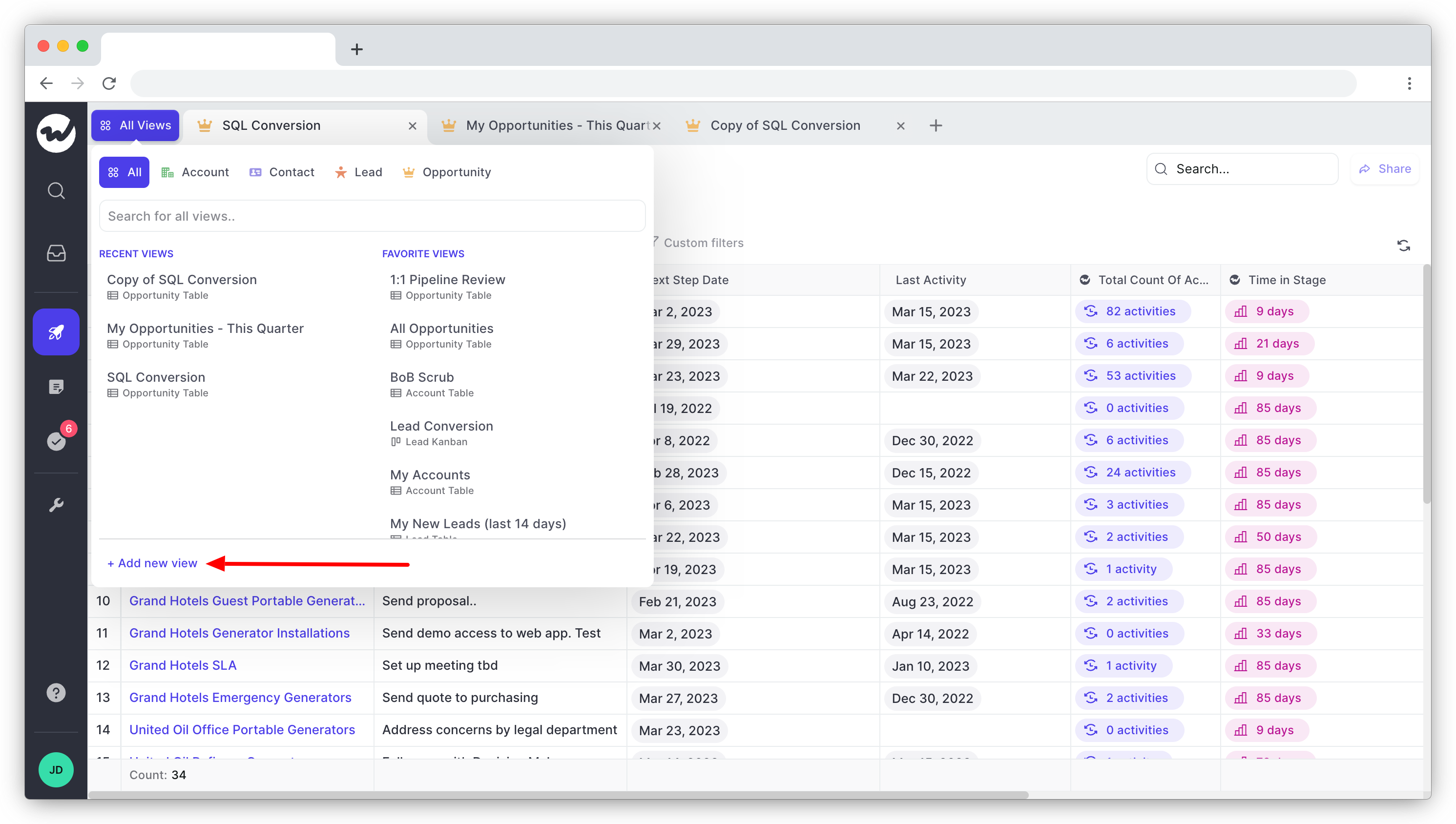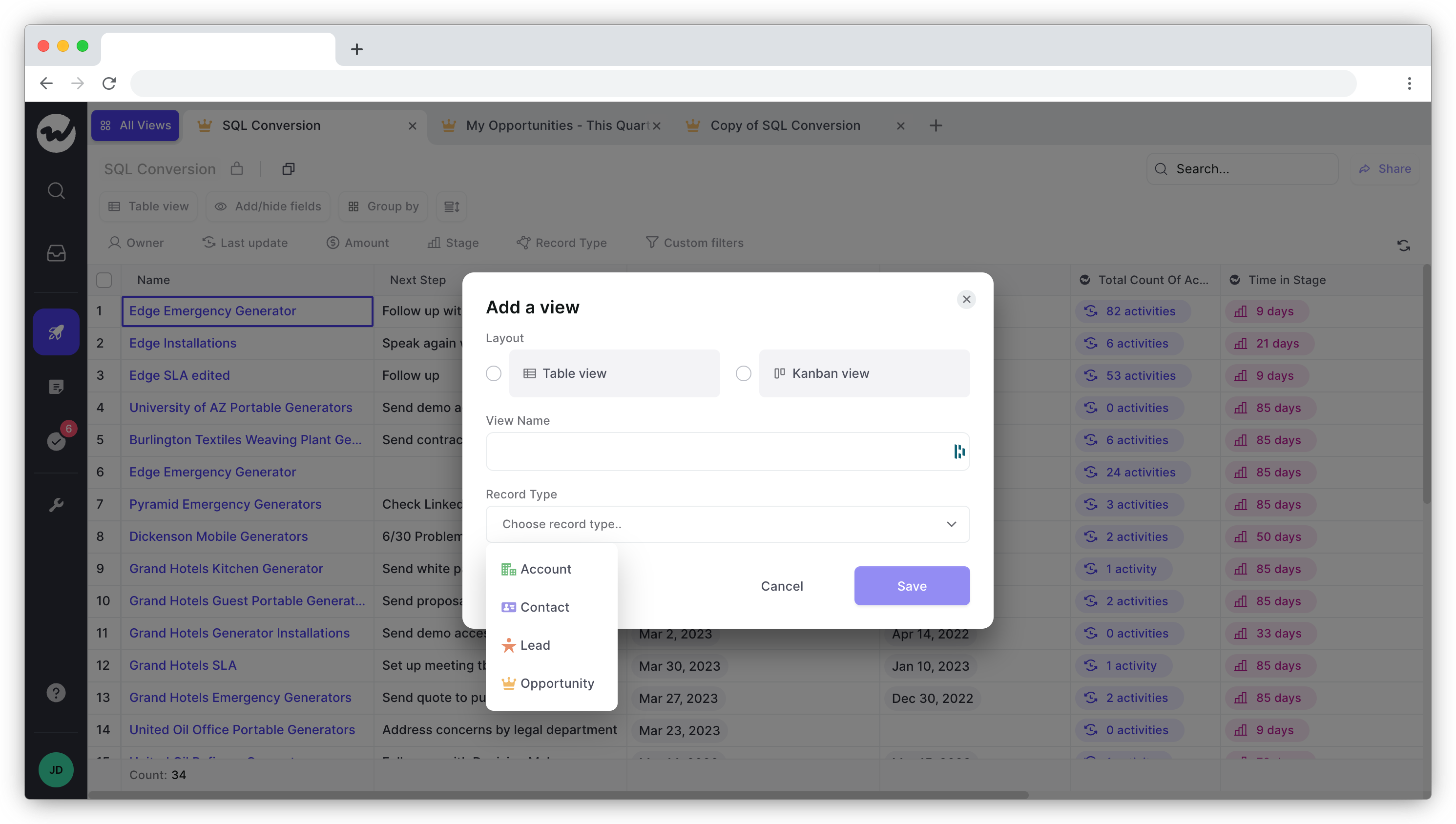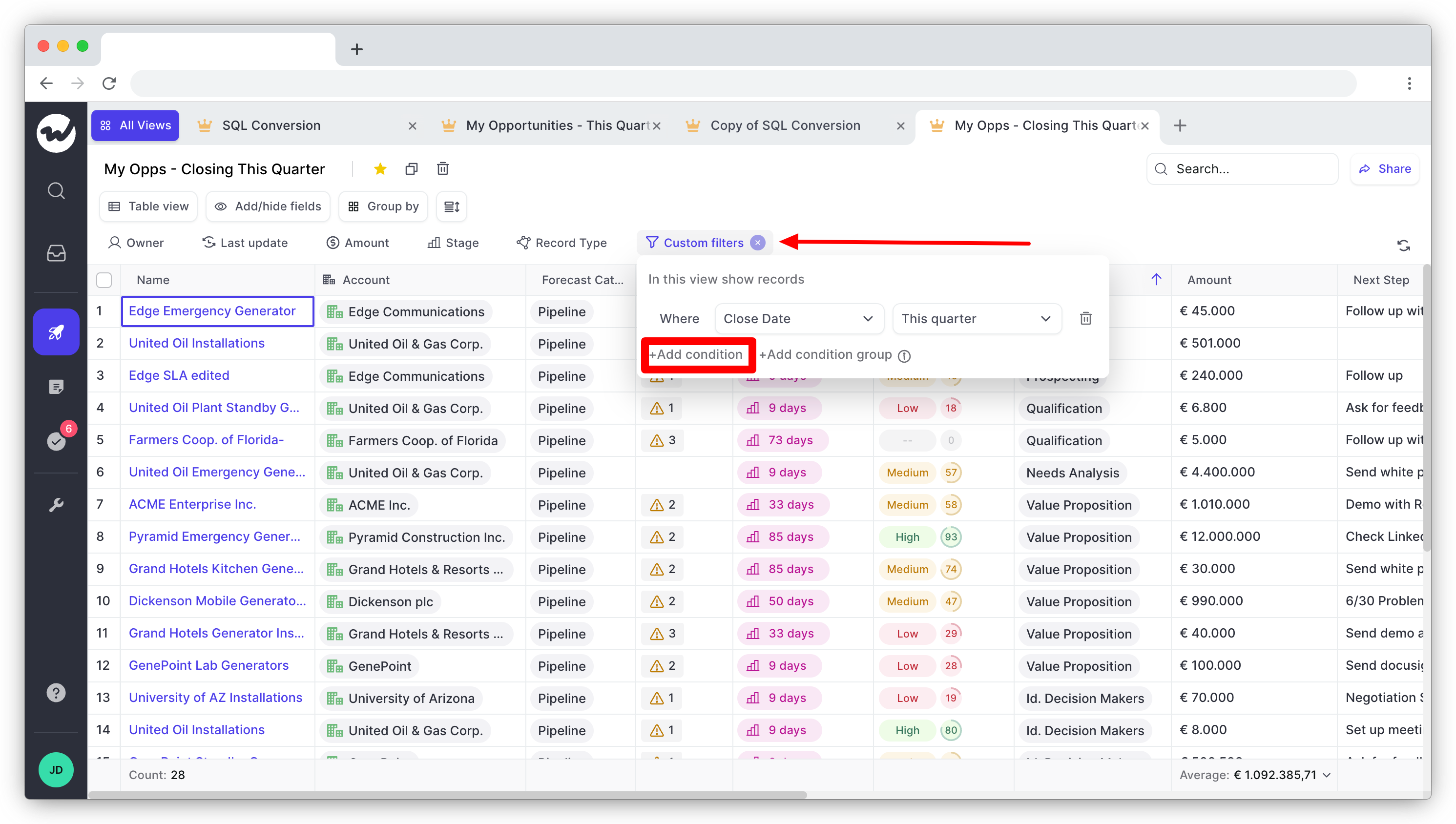5 Sales Pipeline Management Best Practices

The equation is simple—a healthy pipeline equals healthy sales. A strong, predictable sales pipeline indicates that your sales team is doing its job—they actively prospect, nurture leads, and convert those leads into customers that smash growth targets.
But, a study by HBR highlighted that 44% of executives think their organization is ineffective and lacks a formal sales process. This statistic reveals a burning issue: out of all the prospects in your pipeline, how can you ensure these leads become paying customers without a reliable process?
That's why pipeline management is crucial. Regular pipeline management allows businesses to identify opportunities and threats, uncover unaddressed issues, and build a resilient sales machine in the face of competition. So, let's get into it—here are five best practices to improve your sales pipeline management process.
1. Define exit criteria for each stage of the pipeline
When does a lead move out of one stage and into the next? When would you consider a lead "qualified"? Is it when they get on a call, meet with the sales rep, or sign a contract?
Confusion results in chaos. There's no streamlined communication, sales reps follow their own interpretation of the sales stages, and everyone gets overwhelmed trying to complete tasks.
Define what a lead needs to do before they exit one stage and enter the next. This sales pipeline analysis reduces guesswork and promotes accountability—sales reps can identify where they are in their process, what they should do next, and how long it'll take them to move a lead forward in the pipeline.
Quantify and delineate specific actions. For example, move the lead forward based on criteria such as:
- A >95% match on your ICP, and the lead should've signed up for a webinar
- When a demo meeting ends with clear next steps and interest in a proposal
- Closing a deal only when the prospect has signed the contract and sent payment
Share the criteria with your team in checklist format.
Defined exit criteria ensures consistent reporting and CRM data accuracy. This results in better forecasting and gives sales reps the visibility to adjust their strategy as needed.
2. Keep your CRM data clean
Today, CRM software usage isn't as streamlined as it should be. A study by Salesforce highlights that fewer than half of all executives think their CRM system completely supports the customer lifecycle, from discovery to engagement and retention.
Almost half of sellers also consider incomplete data their biggest challenge. And unfortunately, dirty data then results in wrong information, inaccurate forecasts, wasted time, and high churn rates.
Poor data also doesn't give you the full picture. You don't have visibility into which accounts need priority, a customer's history, and the resistance that sales and marketing teams need to overcome.
The solution? Weflow automates sales email logging and can sync notes, calls, meetings, and tasks to Salesforce in a few clicks. This helps improve CRM data hygiene and ensures all relevant data ends up in your Salesforce instance.
3. Track the right metrics
You need metrics to measure your pipeline velocity for sales forecasting and sales process optimization. But tracking the wrong sales pipeline metrics can lead to inaccurate insights and confusion.
Establish baseline metrics that accurately reflect your pipeline's health. While metrics like the total number of leads can be nice, they don't give you the complete picture. Instead, focus on metrics that measure your team's success against realistic and relevant targets.
Note that every sales team is different, and which metrics you’ll track will depend on your sales process and how your team works. Regardless, here are four metrics that indicate a healthy pipeline and apply to most teams:
- Number of deals currently in the pipeline – What's the total number of opportunities your reps are currently working on? How many are stalled? The number of deals in the pipeline shows you how active your team is and how much they can close in the next period. It can also point to any problems in the sales process, such as inconsistently qualified leads or low activity.
- Average deal size – This metric helps you understand if your team is targeting the right deals. Unbalanced deal sizes can mean reps are chasing too many small deals or not enough big ones. A healthy pipeline has a good mix of large and small opportunities, resulting in evenly balanced revenue distribution across different deal sizes.
- Sales velocity – Sales velocity refers to the average sales cycle length and your team's efficiency in closing deals. It measures how quickly your reps can move opportunities through the pipeline, from lead to customer. Evaluating sales velocity helps you adjust targets, resources, processes, or tools if needed.
- Average win rate – Do leads drop off or become customers? Insight into how many leads become paying customers helps you understand your sales process and identify areas of improvement. It shows your sales team's effectiveness at converting leads into customers and which sales pipeline stages, such as discovery or close, need more attention.
By measuring pipeline health with accurate metrics, understanding how deals become at risk of falling through, and leveraging automated sales pipeline management software, you can empower your team for success that drives growth.
4. Conduct regular pipeline reviews
A regular evaluation identifies weak opportunities that your team needs to address. Reps can provide feedback on the opportunities they pursue; sales managers can intervene if needed, and, overall, sales teams get better visibility into their pipeline.
Dan Gray, the CEO of Vendry, visits baseline deal probabilities and pipeline stages every quarter.
To implement and improve our pipeline forecasting, I set up and conducted quarterly meetings with our sales team to analyze our results against the forecasted probability of each stage.
For example, we had initially predicted that when a client booked a meeting, we had a 10% likelihood of that deal resulting in a sale, however as we began monitoring the conversion rate from Meeting Book to Closed Won quarterly, we determined that a client booking a meeting actually correlated to a 25% close rate.
This insight gave us stronger confidence to optimize around generating meetings and allowed us to spend more marketing budget per lead booked given it was now more valuable.
Pipeline meetings improve sync and identify areas of weakness and opportunity. Create an agenda and give all attendants space to share their insights, successes, and challenges. If you notice a rep struggling to move their deals, offer in-depth, one-to-one coaching to help them.
Note that 38% of reps think they spend too much time reviewing pipelines.
Pro tip: You can simplify and speed up pipeline review by using Weflow to create custom pipeline views. Here’s how to do it:
From the Weflow dashboard, click on the Pipeline menu item and then on All views. From there, click the +Add new view link.

Choose between a table or Kanban layout, type in a name for your custom view, and choose from the available record types.

Weflow will then generate a pipeline view using data from your Salesforce instance. From here, you'll be able to further customize the view by using filters and adding or hiding fields.

5. Automate deal risk monitoring
Deals don’t always work out. They involve the opinions of multiple stakeholders, and these can all change.
Sometimes, there's no decision-maker involved in the process, or you're not involved with enough stakeholders. Since the typical purchase for a complex B2B solution involves six to 10 decision-makers, this can lead to deals going off the rails or falling through.
Another risk that might just slip under the radar is low email velocity. If there's minimal back and forth between you and the buyer, it's a sign that the prospect might have gone cold.
Lee Moskowitz of SetSail suggests implementing a strong risk assessment process backed by AI and sales pipeline data.
The best way to monitor risks in your pipeline is to know what steps and actions typically result in closed deals. In other words, you need to know what a good deal looks like compared to an at-risk deal.
To do this, your organization should track deals based on milestones. If your deal's close date is coming up and you haven't hit the typical milestones, your deal is in trouble and needs attention.
For example, a common milestone is "chief decision maker engaged." If the close date is a few weeks away and you still don't have decision-maker buy-in, start working out a plan ASAP.
Pro tip: You can use Weflow’s deal signals feature to understand which deals might be at risk of falling through.

Frequently asked questions about sales pipeline management
Why is it called a sales pipeline?
A sales pipeline is called a pipeline because it visually resembles a pipe, with leads entering at one end and customers exiting out the other. It’s a way to represent the progression of your prospects throughout the sales funnel—from initial contact to purchase.
How do you analyze a sales pipeline?
The most effective way to manage your pipeline is to analyze it periodically—preferably weekly or monthly. This allows you to see which deals are at risk of not closing and take corrective action.
To do this, you can use sales performance metrics such as average win rate and sales velocity to better understand the trends in your pipeline.
What makes a healthy sales pipeline?
All healthy sales pipelines include an even mix of qualified and unqualified leads, with enough opportunities at each stage to meet your revenue goals.
You also want to review deals to identify and solve potential risks before they become major issues. Finally, it’s crucial to stay on top of deal signals to ensure you’re staying informed about the status of your deals.
How do you structure a sales pipeline?
Your sales pipeline should include all of the stages a lead goes through, from initial contact to purchase. This includes qualification, initial contact, discovery call, proposal, follow-up, and closing.
It’s essential to have an organized pipeline to track your deals and better understand the trends in your sales process.
Wrap up
Bottom line—if you don't have visibility into your sales pipeline, it's difficult to spot deals at risk before they turn sour.
Manage your sales pipeline actively and perform regular reviews to identify opportunities for improvement and uncover weak spots.



.png)
.png)








